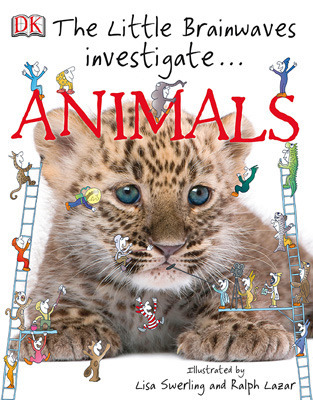ANIMALS
The Little Brainwaves Investigate…ANIMALS
Illustrated by Lisa Swerling and Ralph Lazar
DK Publishing, 2010
ISBN # 9780756662806
Ages 5-10
Nonfiction
"What is an animal? All living things fall into two main groups. They are either an animal or a plant. They all grow, feed, and have young. But animals can do something plants can't do—they move) or at least most of them can)? Join the little Brainwaves to find out more."
This is a book I wish I'd written. From the beginning, it captures the spirit and joy of learning about animals and reveals the fascinating side of this area of life science.
This series, for younger audiences, follows the Brainwaves series for older kids using the little characters called the Little Brainwaves, a set of helpful guides to direct the reader throughout the book.
The book begins with an introduction to animals, distinguishing vertebrates from invertebrates. It also introduces scientific nomenclature in a simple way. It's divided into clear sections, with small segments of information explained in an easily understandable way. Spreads following further distinguish the animals and their activities, including details about the different groups. It covers life cycles, parents, habits, habitats, and invertebrates. The concluding spread gives interesting facts and a little history about animals and grouping. A detailed glossary and index make up the back matter.
Bright, inviting photos are mixed with the Little Brainwaves guys in an attractive layout. The designer did a wonderful job on this book. It's appealing and bright, friendly and fascinating. It would make a great story time book or would be a good book to book talk. It's a great reference and an even better bargain at a reasonable price for a resource kids will return to again and again.
Activity
Choose an animal from the book. Look up its scientific name. Then create that animal's life cycle in an interesting way, showing the stages it undergoes as it is born, develops, and becomes an adult. Include a timeline in the project. This might be a power point, a chart, or a diorama. Maybe you can create another way to show information about your animal.
For more animal information, see National Geographic's pages.
The Animal Diversity Web has examples of animal life cycles.
Enchanted Learning has good life cycle examples.
This site has a variety of information.
Growing With Science has lots of great life cycle ideas.
National Science Standard: life cycle of animals; organisms and their environment
Book provided by publisher.








Shirley Smith Duke's Blog




